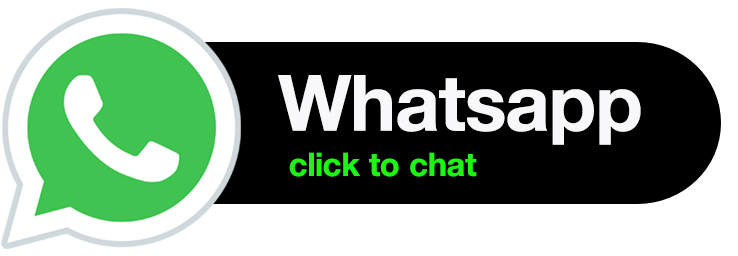Improving Elementary Teacher’s Skills by Using Digital Tools for Interactive Learning
DOI:
https://doi.org/10.58905/saluspublica.v3i1.411Keywords:
Community Service, Digital Tools, Educational Technology, Interactive Learning, Teacher CompetenceAbstract
Improving the competence of teachers at Campago Ipuh Elementary School, Bukittinggi still faces challenges in utilizing technology for interactive learning. Along with the development of the era, the use of digital tools in the learning process is important to improve the quality of education. Therefore, training is needed for teachers to optimize the use of digital technology in teaching. The purpose of this service is to improve the competence of elementary school teachers in utilizing digital tools in interactive learning. The methodology used is training and mentoring in the form of workshops that teach the use of various digital learning applications, as well as providing simulations of the use of these tools in everyday learning. The results obtained show a significant increase in teachers' ability to use digital technology, especially in designing more interesting and effective interactive learning. Teachers are also more confident in integrating technology in the classroom. In conclusion, the use of digital tools has proven effective in improving teacher competence and learning quality. The recommendation from this activity is that similar training be carried out continuously and involve more teachers in other areas.
References
S. Waite-Stupiansky, “Jean piaget’s constructivist theory of learning,” Theories of Early Childhood Education: Developmental, Behaviorist, and Critical. pp. 3–18, 2022, doi: 10.4324/9781003288077-2.
T. Iba, “Pattern language and the future of education in light of constructivist learning theories, Part 2: The social constructivism of Lev Vygotsky,” ACM International Conference Proceeding Series. 2019, doi: 10.1145/3361149.3361183.
S. P. Damayanti, A. Khamidi, and K. Karwanto, “Private Junior High School Marketing Management to Face the New Students Admission (PPDB) Policies of State Junior High School in Surabaya,” Int. J. Educ. Vocat. Stud., vol. 3, no. 1, p. 64, 2021, doi: 10.29103/ijevs.v3i1.3389.
F. Maquet, “Immersive and interactive learning experiences in school education with 360° videos,” Lecture Notes in Informatics (LNI), Proceedings - Series of the Gesellschaft fur Informatik (GI). pp. 301–302, 2023, doi: 10.18420/delfi2023-65.
S. L. Agung and A. R. Kumala, “INDEPENDENT CURRICULUM INTEGRATION IN RESPONDING TO THE CHALLENGES OF THE ERA OF SOCIETY 5.0,” ijessr.com. [Online]. Available: https://ijessr.com/uploads2022/ijessr_05_672.pdf.
H. Fahri and K. Samsudin, “Mobile Learning Environment System (MLES): The Case of Android-based Learning Application on Undergraduates’ Learning,” Int. J. Adv. Comput. Sci. Appl., vol. 3, no. 3, pp. 1–5, 2012, doi: 10.14569/ijacsa.2012.030311.
İ. Göksu and B. Atici, “Need for Mobile Learning: Technologies and Opportunities,” Procedia - Soc. Behav. Sci., vol. 103, pp. 685–694, 2013, doi: 10.1016/j.sbspro.2013.10.388.
A. N. Khomarudin and L. Efriyanti, “Pengembangan Media Pembelajaran Mobile Learning Berbasis Android Pada Mata Kuliah Kecerdasan Buatan,” J. Educ. J. Educ. Stud., vol. 3, no. 1, p. 72, 2018, doi: 10.30983/educative.v3i1.543.
L. Efriyanti and F. Annas, “Aplikasi Mobile Learning Sebagai Sarana Pembelajaran Abad 21 bagi Pendidik dan Peserta Didik di era Revolusi Industri 4.0,” J. Educ. J. Educ. Stud., vol. 5, no. 1, p. 29, 2020, doi: 10.30983/educative.v5i1.3132.
M. C. Ally, Introduction, vol. 2, no. 1. 1999.
R. Azevedo, “Are pedagogical agents’ external regulation effective in fostering learning with intelligent tutoring systems?,” Lecture Notes in Computer Science (including subseries Lecture Notes in Artificial Intelligence and Lecture Notes in Bioinformatics), vol. 9684. pp. 197–207, 2016, doi: 10.1007/978-3-319-39583-8_19.
A. Ghofur, “The Teachers’ Perceptions of the Effectiveness of Using Virtual Learning Media,” Ideas J. Pendidikan, Sos. dan …, 2021, [Online]. Available: https://www.jurnal.ideaspublishing.co.id/index.php/ideas/article/view/453.
P. H. Susilo and M. G. Rohman, “Google Classroom Optimization As Online Learning Innovation During The Covid-19 Pandemic,” Gener. J., 2021, [Online]. Available: http://ojs.unpkediri.ac.id/index.php/gj/article/view/16117.
A. Putra and K. Afrilia, “Systematic literature review: penggunaan kahoot pada pembelajaran matematika,” J. Ilm. Pendidik. Mat. Al …, 2020, [Online]. Available: https://journal.iainlangsa.ac.id/index.php/qalasadi/article/view/2127.
A. I. Kristiana, N. Imsiyah, R. Alfarisi, and T. Kartini, “Peningkatan Kompetensi TIK Pendidik dalam Mengembangkan Media Pembelajaran Mobile-learning Berbasis Android Melalui Learning Cycle (3E) bagi Pendidik MAN 3 Jember,” JPKMI (Jurnal Pengabdi. Kpd. Masy. Indones., vol. 1, no. 4, pp. 205–213, 2020, doi: 10.36596/jpkmi.v1i4.101.
T. Peng, Y. Luo, and Y. Liu, “AI-Based Equipment Optimization of the Design on Intelligent Education Curriculum System,” Wireless Communications and Mobile …. hindawi.com, 2022, [Online]. Available: https://www.hindawi.com/journals/wcmc/2022/3614883/.
H. Khosravi, S. B. Shum, G. Chen, C. Conati, and ..., “Explainable artificial intelligence in education,” … : Artificial Intelligence. Elsevier, 2022, [Online]. Available: https://www.sciencedirect.com/science/article/pii/S2666920X22000297.
P. Indarto, “Model Pembelajaran Hybrit Learning Pada Mata Kuliah SepakBola di Pendidikan Olahraga FKIP UMS,” JOSSAE J. Sport Sci. Educ., vol. 3, no. 2, p. 69, 2019, doi: 10.26740/jossae.v3n2.p69-75.
Waslaluddin, “Creative learning model as the implementation of curriculum learning 2013 to achieve 21st century skills (Case study: Elementary school in bandung),” Int. J. Sci. Technol. Res., vol. 8, no. 9, pp. 675–678, 2019, [Online]. Available: https://api.elsevier.com/content/abstract/scopus_id/85073452217.
I. Magdalena, A. Hidayah, and T. Safitri, “Analisis Kemampuan Peserta Didik Pada Ranah Kognitif, Afektif, Psikomotorik Siswa Kelas II B SDN Kunciran 5 Tanggerang,” J. Pendidik. dan Ilmu Sos., vol. 3, no. 1, pp. 48–62, 2021, [Online]. Available: https://ejournal.stitpn.ac.id/index.php/nusantara.
K. Thongkoo, “Students’ Acceptance of Digital Learning Tools in Programming Education Course using Technology Acceptance Model,” 2020 Joint International Conference on Digital Arts, Media and Technology with ECTI Northern Section Conference on Electrical, Electronics, Computer and Telecommunications Engineering, ECTI DAMT and NCON 2020. pp. 377–380, 2020, doi: 10.1109/ECTIDAMTNCON48261.2020.9090771.
M. C. Sánchez-Gómez, “Blended learning in tertiary education: Teachers’ beliefs according to the technology acceptance model,” Int. J. Learn. Technol., vol. 15, no. 4, pp. 341–359, 2020, doi: 10.1504/IJLT.2020.113883.
Nurhayani, Yaswinda, and M. A. Movitaria, “Model Evaluasi CIPP Dalam Mengevaluasi Program Pendidikan Karakter Sebagai Fungsi Pendidikan,” J. Inov. Penelit., vol. 2, no. 8, pp. 2353–2362, 2022.
Downloads
Published
Issue
Section
License
Copyright (c) 2025 Liza Efriyanti Liza Efriyanti, Sarwo Derta, Firdaus Annas, Sri Atiqah, Tiara Hardiana Putri, Sadar Martua Haholongan Sir, Muhammad Anis Muharram

This work is licensed under a Creative Commons Attribution-ShareAlike 4.0 International License.








